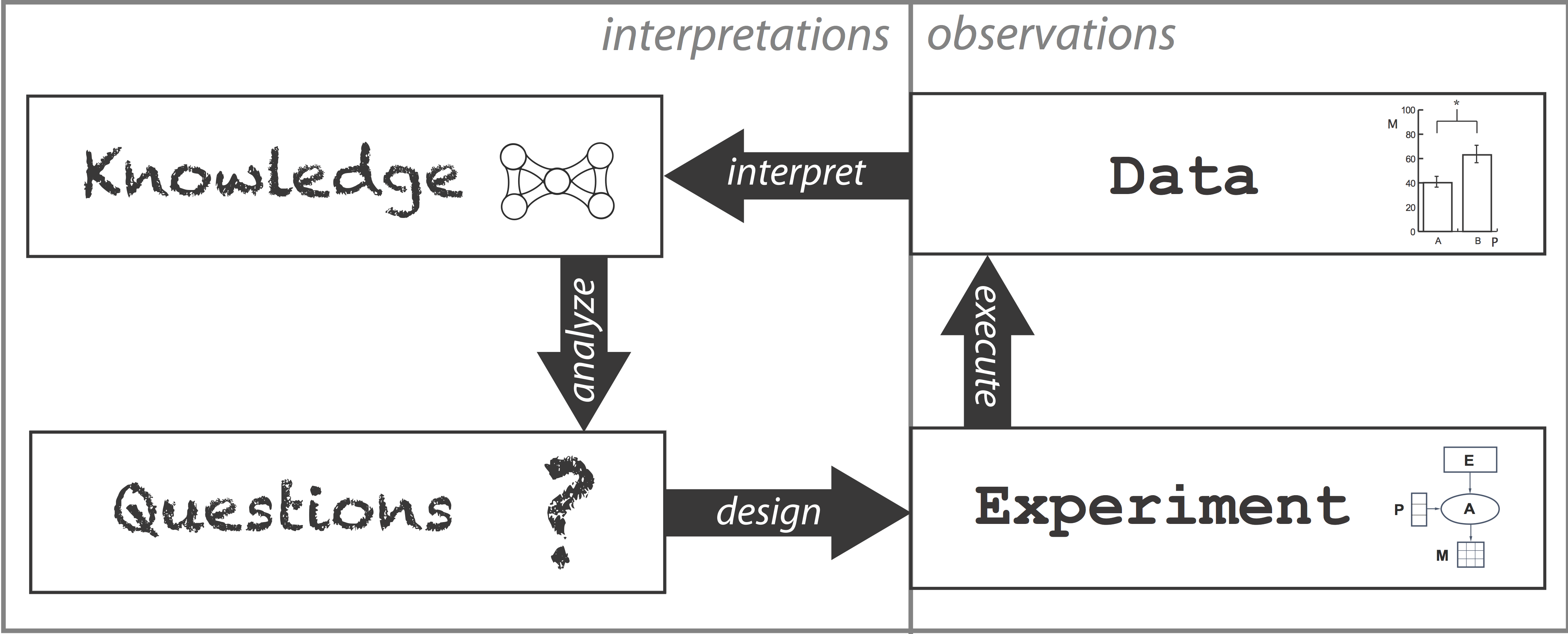What is Scientific Knowledge Engineering?
How research into 'Scientific Knowledge Engineering' straddles work in other disciplines and provides a methodology for the development of scientific informatics systems.
By Gully A. Burns
At a high level, our work is centered on the following construct:

Scientific knowledge moves forward when a well-defined paradigm permits researchers to analyze their knowledge, formulate questions that can be tested experimentally so that data can be interpreted to generated knowledge. Exactly how this simplified, unifying model can be adapted to understand the sudden breakthroughs and shifts under a paradigm shift is a fascinating, unresolved aspect of this way of looking at the world.
Within the discipline of Scientific Knowledge Engineering, we examine the structure of how this process works and how to improve and accelerate it. It’s important to note that information structures exist already that are attempting to drive this cycle: the scientific literature, academic conferences and communities, databases, ontologies, advanced analysis methods modern work in scientific workflows, semantic web, eScience and advanced informatics infrastructure. Beyond that, increasingly sophisticated computational methods are continously being developed in the field of AI research that could be applied to scientific knowledge to further accelerate our process over the cycle.
An important first step of any of these methods is to build knowledge representations of the domains at hand. This is where we have primarily worked so far in developing the approach called ‘Knowledge Engineering from Experimental Design’ (KEfED). Broadly speaking, this methodology seeks to create a generative model for data based on the design of the experimental protocol that created the data. I describe this in detail in a presentation to the INCF from 2013.
Beyond this, our work generally seeks to find computational ways to accelerate the process of doing scientific work by automating the different stages of the cyclic process shown above. This blog is a vehicle to post informal new ideas and to track novel developments in the field.